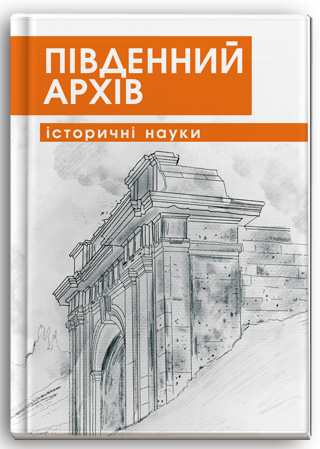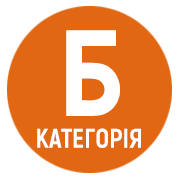UKRAINIAN HISTORICAL, ARCHITECTURAL AND MUSEUM POTENTIAL FOR SUCCESSFUL EUROPEAN CULTURAL INTEGRATION
DOI:
https://doi.org/10.32999/ksu2786-5118/2022-39-3Keywords:
architectural, museum fund, European integration, international communication, cultural cooperationAbstract
For the near future of our Ukraine, an important direction of international cooperation, first of all, with neighboring states – with Poland, Slovakia, Hungary, Romania, will be cultural. Today, this type of cooperation is impossible due to Putin’s aggression on our lands. The purpose of this work is to characterize the historical, architectural and museum potential of the western regions of Ukraine (Lviv, Zakarpattia, Ternopil, Ivano-Frankivsk, Volyn, Chernivtsi, Rivne) for the formation and development of modern, successful European cultural integration. The historiographical basis of the specified question was studied using the chronological method from the time of independence of Ukraine to the present day, and the characteristics of the museum and historical-architectural funds of the largest cities of western Ukraine were studied using the descriptive method. Results. Regarding the analysis of the historiographical basis of the question, Ukrainian-Polish cultural cooperation in various aspects (regional, educational, scientific, humanitarian, etc.) was studied. Lviv, Zakarpattia, Ternopil, Ivano- Frankivsk, Volyn, Chernivtsi, and Rivne regions have extremely rich historical, architectural and museum potential for successful Ukrainian-European cultural cooperation. Conclusions. There are a lot of museums, they are diverse in terms of content, and therefore every European tourist can find something necessary and useful. As for the historical and architectural potential of the named regions, the vast majority of objects that represent value are religious buildings, mostly active, for local believers (churches of the Orthodox Church, Roman Catholic, Greek Catholic, Jewish, Armenian, etc.). The material base for Ukrainian-European cultural cooperation is sufficient to satisfy the spiritual needs of believers of various faiths, as well as atheists, connoisseurs of history and culture, and will contribute to the acceleration of the process of European integration.
References
Стрільчук Л.В., Стрільчук В.В. Інституційні складові українсько-польських гуманітарних взаємин і співробітництва : монографія. Луцьк : Волинські старожитності, 2013. С. 78.
Богородецька О.І. Співробітництво між містами-побратимами України і Польщі у контексті європейської інтеграції : автореф. дисер. ... канд. політ. наук : 23.00.04. Луцьк, 2015. С. 76.
Калакура О. Цивілізаційний вимір українсько-польської співпраці на тлі євроінтеграцйних процесів (досвід Галичини). Наукові записки ІПіЕНД ім. І.Ф. Кураса НАН України. 2016. С. 283–295.
Свинаренко Н.О. Про релігійні храми Західної України та їх значення для туристичного прикордонного співробітництва. Нематеріальна культурна спадщини як сучасний туристичний ресурс: досвід, практики, інновації : зб. тез за матеріалами V Міжнародної науково-практичної конференції-фестивалю, (м. Київ,19-20 травня 2022 р.). Київ : КНУКіМ, 2022. С. 254–257.
Свинаренко Н.О. Польсько-українська співпраця на основі освітніх, культурних, економічних здобутків : проблеми і перспективи. Poland and Ukraine in modern Europe: intercultural dialogue – the role of national minorities – challenges and threats: Scientific monograph. Riga, Latvia : «Baltija Publishing», 2022. S. 646–653.
Артьомов І.В. Актуальні аспекти українсько-словацького транскордонного єврорегіонального співробітництва. Aktual problems of international relations. Release 119 (part 1). 2014. С. 18–25.
Кобець Н.О. Словацько-український діалог: літературний вимір : автореф. дис....канд. філол. наук : 10.01.05. Київ, 2020. 21 с.
Альфошій В.В. Українці Словаччини: громадсько-культурне життя та процес національного самовизначення (1989–1995) : автореф. дис.... канд. іст. наук : 07.00.02. Київ, 2021. 19 с.
Голош М. Українсько-угорські відносини новітньої доби та їх вплив на європейську інтеграцію. Геополітика України: історія і сучасність. Збірник наукових праць. Випуск 1(20). 2018. С. 78–86.
Про культурне співробітництво України із зарубіжними країнами за жовтень 2017 р. URL: https://nlu.org.ua/storage/files/Infocentr/Culturne_spivrobitnitstvo_Ukraini/2017/Spiv10.pdf (дата звернення: 14.09.2022).
Про культурне співробітництво України із зарубіжними країнами за вересень 2017 р. URL: https://nlu.org.ua/storage/files/Infocentr/Culturne_spivrobitnitstvo_Ukraini/2017/Spiv10.pdf (дата звернення: 14.09.2022).
Музеї. галереї, виставки у Львові. URL: https://www.karpaty.info/ua/uk/lv/lw/lviv/museums/ (дата звернення: 14.09.2022).
Музеї в Івано-Франківську. URL: https://www.karpaty.info/ua/uk/if/fr/ivano-frankivsk/museums/ (дата звернення: 14.09.2022).
Україна і Польща. Слідами історичної спадщини. URL: https://instytutpolski.pl/kyiv/2019/01/01//(дата звернення: 14.09.2022).
Крістіан-Леон Цуркану Говорити і відчувати по-румунськи. URL: https://zbruc.eu/node/90553 (дата звернення: 14.09.2022).
Делегація МІОКу взяла участь у Х Міжнародному симпозіумі «Румунсько-українські відносини. Історія та сучасність». URL: https://lpnu.ua/news/delehatsiia-mioku-vziala-uchast-u-kh-mizhnarodnomusympoziumi-rumunsko-ukrainski-vidnosyny (дата звернення: 14.09.2022).
Між православними України і Румунії є чимало спільного. Коли румунська церква визнає ПЦУ? URL: https://www.radiosvoboda.org/a/pravoslavna-tserkva-ukrayiny-i-rumunska-tserkva/31147310.html (дата звернення: 14.09.2022).
Сеньківська Г. Діяльність державних і громадських осередків з вивчення та охорони історико-культурної спадщини Тернопілля (др. пол. ХХ – поч. ХХІ ст. ). Тернопіль, 2011. С. 94–98.
Скакальська І., Борак І., Сеньківська Г. Інформаційний потенціал музеїв у процесі формування професійної компетенції студентів. Society. Dokument. Communikation. 2022. Ed. 14. C. 285–303.



